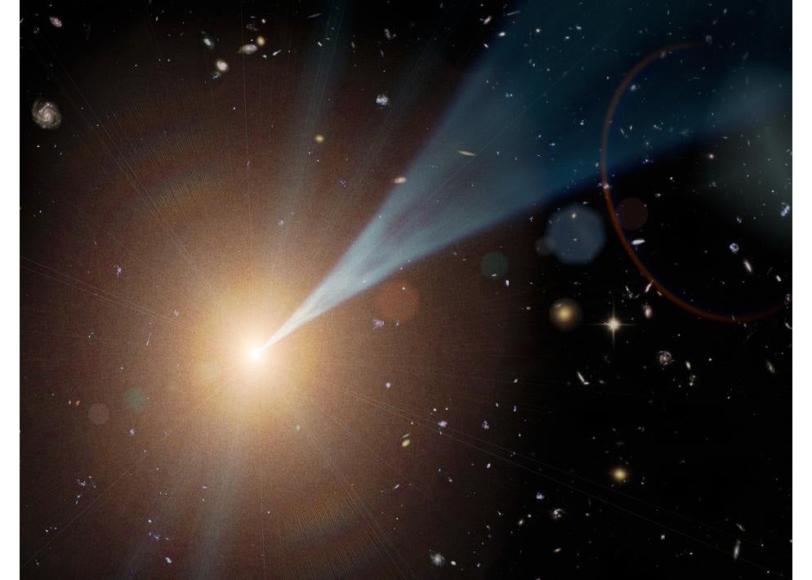NASA's WISE Mission Sees Skies Ablaze With Blazars
from NASA
Pasadena, Calif. — Astronomers are actively hunting a class of supermassive black holes throughout the universe called blazars, thanks to data collected by NASA's Wide-field Infrared Survey Explorer (WISE). The mission has revealed more than 200 blazars and has the potential to find thousands more.
Blazars are among the most energetic objects in the universe. They consist of supermassive black holes actively "feeding," or pulling matter onto them, at the cores of giant galaxies. As the matter is dragged toward the supermassive hole, some of the energy is released in the form of jets traveling at nearly the speed of light. Blazars are unique because their jets are pointed directly at us.
"Blazars are extremely rare because it's not too often that a supermassive black hole's jet happens to point towards Earth," said Francesco Massaro of the Kavli Institute for Particle Astrophysics and Cosmology at SLAC, and principal investigator of the research, published in a series of papers in the Astrophysical Journal. "We came up with a crazy idea to use WISE's infrared observations, which are typically associated with lower-energy phenomena, to spot high-energy blazars, and it worked better than we hoped."
The findings ultimately will help researchers understand the extreme physics behind super-fast jets and the evolution of supermassive black holes in the early universe.
WISE surveyed the entire celestial sky in infrared light in 2010, creating a catalog of hundreds of millions of objects of all types. Its first batch of data was released to the larger astronomy community in April 2011 and the full-sky data were released last month.
Read the full announcement on the NASA Jet Propulsion Laboratory website.

(Image courtesy NASA/JPL-Caltech)
